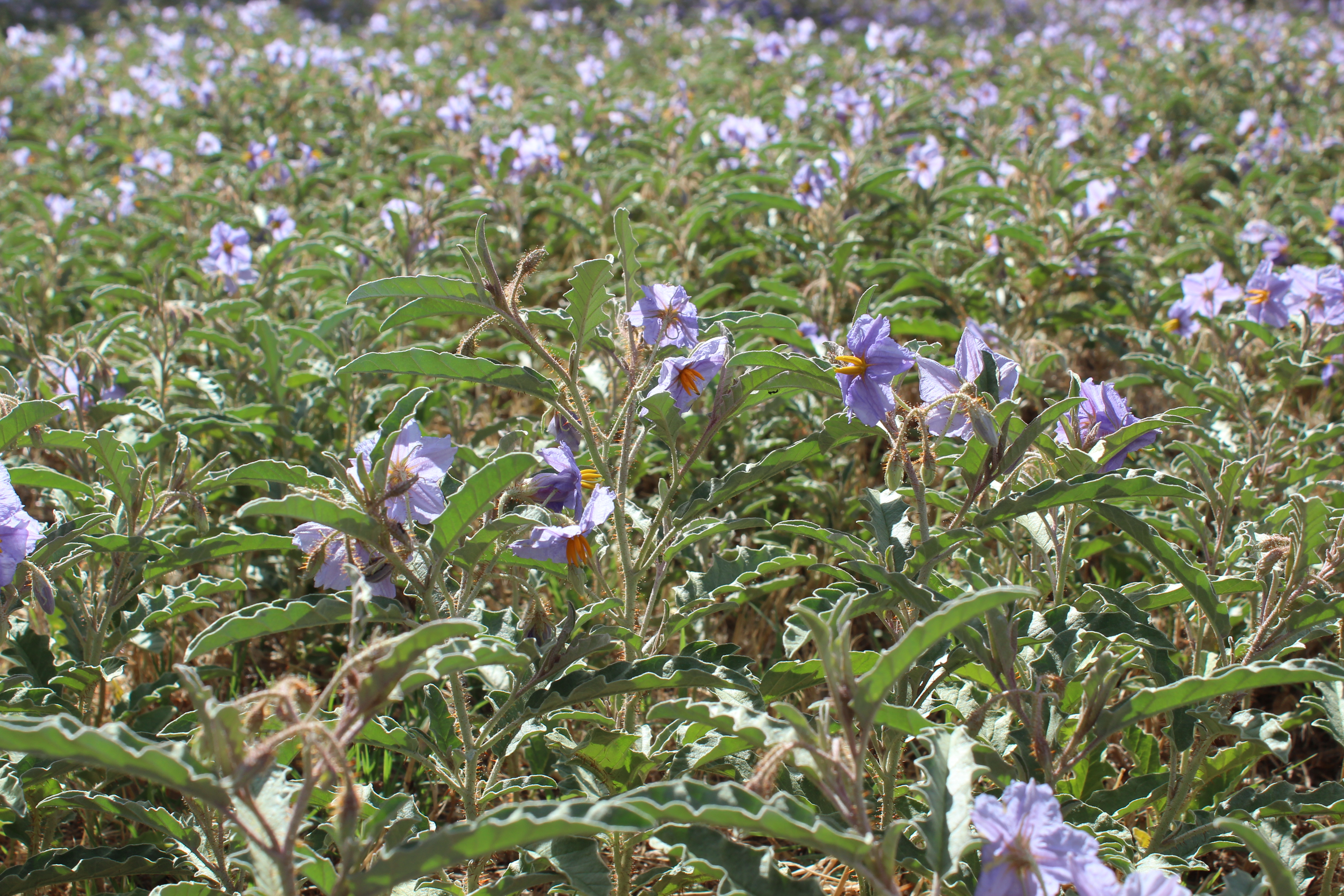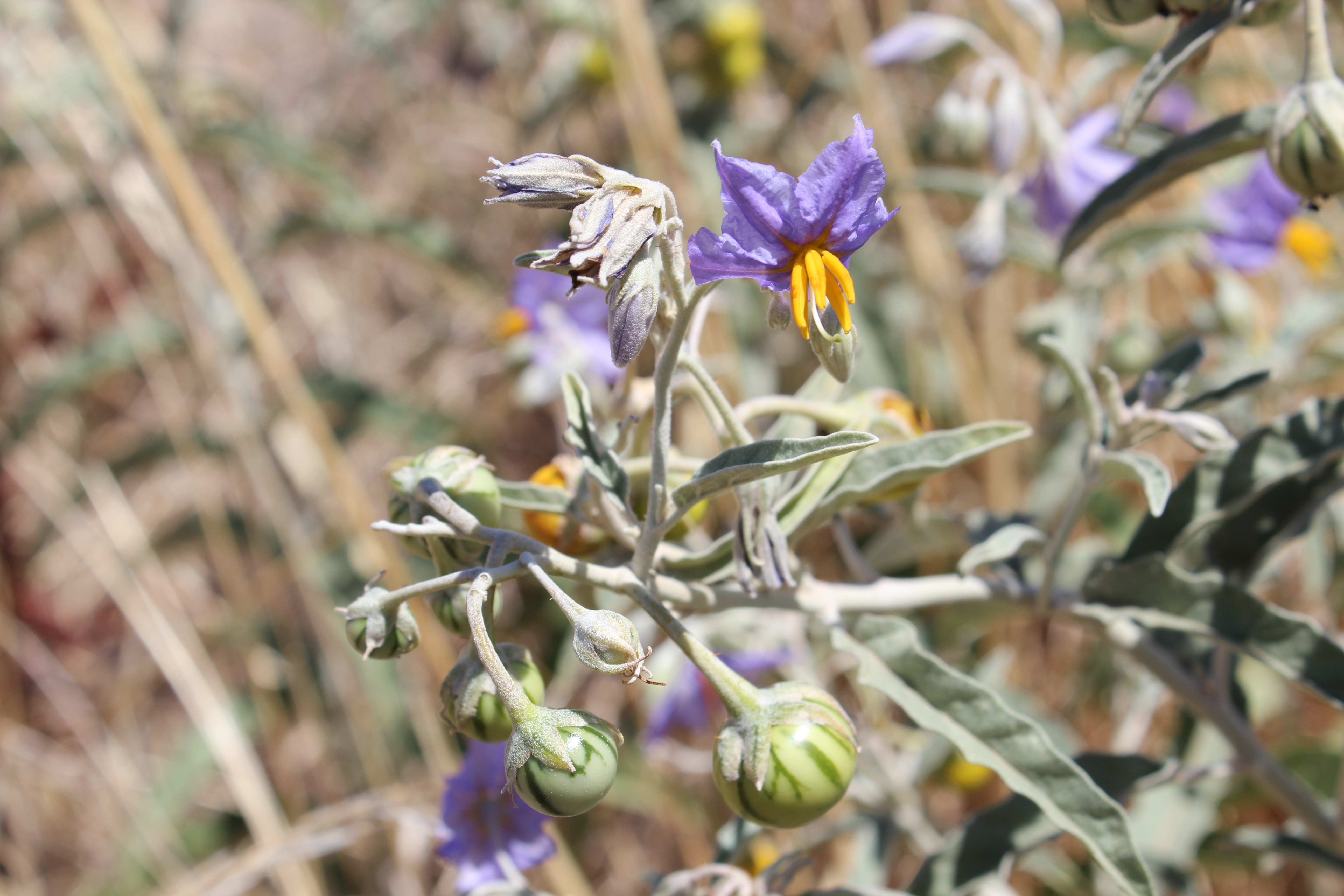Silverleaf nightshade is a significant weed of crops and pastures, in which it forms dense infestations that can reduce productivity by 20–40%.
Originating in America, silverleaf nightshade (Solanum elaeagnifolium) was first discovered in South Australia in 1914. It is now found scattered across greater Adelaide with widespread infestations throughout the northern suburbs, horticultural and agricultural districts.

Why is silverleaf nightshade a problem?
Silverleaf nightshade has a deep root system that extends two or more metres underground. This allows it to tap into nutrients and water that other plants can’t access, and withstand summer droughts. Because of this, it competes with winter crops and pastures, by using up available resources in the ground during summer.
Silverleaf nightshade forms large, connected patches that are hard to control using any one management practice, including herbicide application. The high cost of controlling this weed combined with its impact on productivity greatly reduces the value of infested agricultural land.
What does silverleaf nightshade look like?
Silverleaf nightshade is an erect plant with stems of around 30 to 60 cm high that have branches coming off of them. These stems, particularly the lower sections, are covered in tan-coloured prickles of around 2–5mm.
Leaves can vary in size and shape depending on the location and seasonal conditions, but they’re generally 6–15 cm long, 2–3 cm wide, and shaped a bit like gum leaves. They have wavy edges and are “fuzzy” to touch.
The flowers are generally purple to violet with bright yellow anthers in the middle, 3 cm in diameter and have 5 petals. They can occasionally be white. Flowers can be seen in November and throughout summer.

Round, green berries generally form on the plant in January, ripening to yellow after about 4–8 weeks and eventually to orange-tan as they dry. These dried berries may stay on the dead stems throughout winter.
How does silverleaf nightshade spread?
Silverleaf nightshade can reproduce from seed, root fragments and can even clone itself, with new plants popping up from its extensive root system. It is spread by machinery, floodwater, slashing and animals.
Seeds – found inside the berries – can remain viable in the soil for about 5 years.
How to get rid of silverleaf nightshade from your property?
The best control strategy for silverleaf nightshade is prevention – vigilant monitoring for new outbreaks and immediate treatment will help stop it establishing.
Hygiene
If you have sheep or other grazing animals and are moving them from a site that is infested to one that is not, do so before the plants fruit.
Ideally, animals should be kept in a holding yards for 7–14 days to ensure that any berries or seeds they have eaten have passed through their system. This holding area should be checked for weed seedlings later.
Make sure that any animal feed, stock, produce and soil are free from silverleaf nightshade contaminants.
Mechanical
Slashing before berries develop can suppress the plants temporarily and help synchronise flowering, ready for herbicide application.
Chemical
To be effective, chemical control ideally requires 2–3 treatments during their growing season (spring and summer), applied at the early stage of flowering and before berries develop. Various chemicals are available. Slashing to set back plants and synchronise flowering can reduce number of chemical treatments required over a season.
For advice on chemical options please refer to Identifying declared weeds. More detailed information about silverleaf nightshade can be found in the Department of Primary Industries and Regions SA’s Silverleaf nightshade Australian best practice management manual 2018.
Is silverleaf nightshade a declared weed?
Yes. Silverleaf nightshade is both a declared weed under the Landscape South Australia Act 2019 and a Weed of National Significance.
Main image courtesy of John Heap, PIRSA.
Observations of weeds can be entered into iNaturalist, an app which can assist with identification of species.